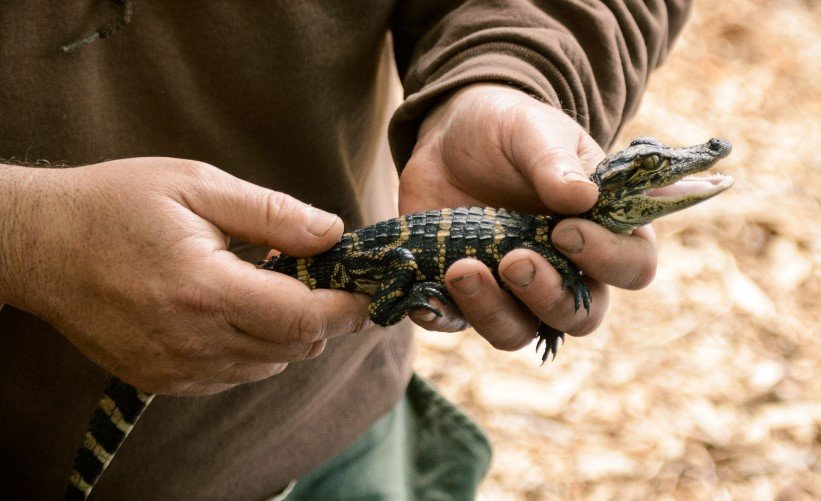A new study by the University of Georgia reveals that high mercury levels are showing up in Georgia’s alligators. Scientists say that’s a red flag not just for reptiles, but for the entire ecosystem—including humans.
In what was meant to be a deeper dive into gator health, researchers stumbled onto something more sinister. Turns out, it’s not just the sharp teeth you should worry about in Georgia’s swamps—there’s something invisible and toxic in the water too.
Gators as Ecosystem Barometers
Researchers at UGA’s Odum School of Ecology teamed up with Georgia Sea Grant and the Marine Extension to study alligators at three locations: the Okefenokee Swamp, Jekyll Island, and South Carolina’s Yawkey Wildlife Center.
They weren’t initially looking for mercury. But the deeper they looked, the more unsettling things got.
“Alligators are these ancient, apex animals. They eat a lot of things, so when mercury builds up in them, it tells us something is off,” said Kristen Zemaitis, the study’s lead author.
Mercury tends to accumulate the higher up you go in the food chain. So when it’s turning up in predators like alligators, it means everything below them—frogs, fish, even the soil and water—has been affected.
In short: these gators are walking, growling warning signs.

Mercury’s Long Toxic Shadow
Mercury, for those who haven’t thought about chemistry since high school, is a heavy metal. It shows up in the air, water, and soil, often as a result of industrial emissions and coal-burning power plants.
Once in the environment, it doesn’t go away easily. And in watery ecosystems like swamps, lakes, and estuaries, mercury transforms into methylmercury—a much more toxic version that gets absorbed into living tissue.
This is where things get nasty.
• Methylmercury builds up in fish, amphibians, and birds
• Predators (like alligators) eat those animals
• Over time, mercury accumulates in their bodies, especially in fat and liver tissue
• Mercury can be passed from mother to offspring
Zemaitis and her team found exactly that: smaller alligators and hatchlings already carrying significant mercury loads. That means baby gators are being “born toxic,” so to speak.
Human Health? Yeah, That’s at Risk Too
It’s easy to hear about mercury in alligators and shrug—after all, most people don’t make a habit of eating swamp reptiles. But the implications go further.
Communities near the Okefenokee and Jekyll Island often rely on local fish and game. Many of these same species are showing signs of mercury exposure too. And mercury is no joke—it’s a neurotoxin.
For humans, long-term exposure can lead to:
-
Developmental problems in children
-
Memory issues and tremors
-
Damage to kidneys and the central nervous system
-
Reproductive issues
So while you might not be munching on gator tail tonight, you might still be ingesting mercury through catfish, bass, or even frogs caught in those same waters.
One sentence here to breathe.
The study didn’t explicitly measure human exposure, but the warning signs are hard to miss. If gators are mercury-laced, the rest of the food web probably is too.
What the Data Says—And Why It’s a Wake-Up Call
Researchers tested tissue samples from alligators across the three sites. They measured mercury levels in muscle and liver tissues and compared them across age, size, and location.
| Location | Avg Mercury Level (ppm) | Notes |
|---|---|---|
| Okefenokee Swamp | 1.2 ppm | Highest concentration found |
| Jekyll Island | 0.9 ppm | Moderate but still concerning |
| Yawkey Wildlife Center | 0.6 ppm | Lower but still detectable |
Anything above 0.3 ppm in fish is considered dangerous by the EPA. That should put these numbers into perspective.
Another single-line paragraph here, just to keep the flow more natural.
These mercury levels didn’t show up overnight. They’ve likely been building over years, maybe decades. And now, they’re reaching a tipping point.
The Bigger Picture: Swamps, Policy, and Prevention
Swamps don’t get a lot of policy attention. They’re muddy, buggy, and far from big cities. But they’re vital to southern ecology. And this mercury problem highlights a bigger failure: not enough environmental monitoring.
Industrial runoff—often from hundreds of miles upstream—might be the invisible culprit. But lax regulation, weak enforcement, and underfunded environmental programs make it worse.
Here’s what experts say needs to happen:
-
More water testing in rural and wetland areas
-
Tracking mercury emissions at the state and federal level
-
Better communication with local communities about food safety
-
Investment in long-term monitoring programs for wildlife health
This isn’t just about gators anymore. It’s about ecosystems that are quietly being poisoned while no one’s watching.
What Comes Next? That Depends on Us
Zemaitis said her team plans to expand the study. They want to look beyond alligators—to fish, birds, maybe even amphibians. The hope is to build a more complete picture of what’s happening in Georgia’s waterways.
One sentence to slow the pace again.
But it’s not just up to researchers. State agencies, local officials, and even residents have a part to play. Whether that’s pushing for policy change, funding more studies, or simply being cautious about what ends up on the dinner table—awareness is step one.
One final thought: When the top predator in the swamp is born with mercury in its blood, it’s not just a wildlife problem. It’s a warning.
